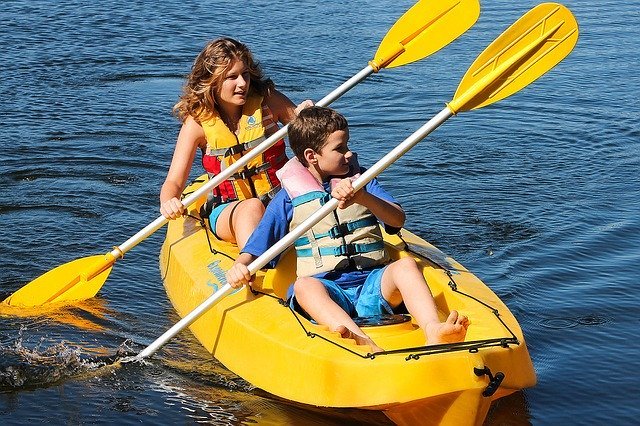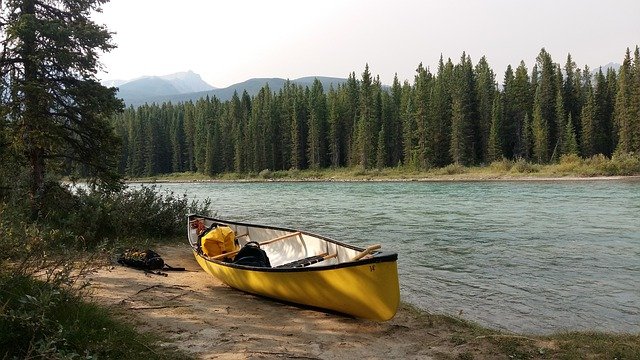Want to try paddling for sports or leisure but can’t decide which watercraft to use? Here we’ll take a look at kayaks vs. canoes and outline the main differences between the two to hasten the decision-making process and get you paddling the soonest.
Kayaks and canoes have been around for centuries yet many people still confuse one for the other, which is rather understandable since the terms are often used interchangeably in some parts of the world. But these boats are different from one another in many aspects as we’ll see below.
What Is a Kayak?
Kayaking is always my preference. I like being down closer to the water. Kayaks were invented by the indigenous tribes living near the arctic and subarctic regions using driftwood (or carved whale bones where wood is scarce) for frames and sealskin for canvas. These boats were predominantly used for hunting seals, hence making it important that the boat be small and agile.

Modern kayaks basically have the same design profile as that of their ancestors – a slim body with pointed ends and a hole in the middle where the paddler sits. These kayaks are manufactured from a variety of materials including plastic, thermoform, fiberglass and others. They are also available in several types like tandem kayaks, whitewater kayaks, and touring kayaks to name a few.
What Is a Canoe?
The oldest canoe discovered is around 10,000 years old so they were basically already being used long before kayaks were invented. But unlike kayaks which were localized in the arctic and subarctic regions, canoes were apparently being used in various parts of the world like Africa, China, and North America. Also, while kayaks were used for hunting, canoes were more of the fishing and cargo vessel type.

Canoe designs have come a long way, far from the ancient dug-out logs to the boats we know today. Made from wood, fiberglass, aluminum and other materials, canoes are being sold in the market in the forms of recreational canoes, whitewater canoes, and racing canoes.
What Are their Main Differences?
Put a canoe and kayak side by side and you’ll immediately see the difference in design. However, there’s a host of other dissimilarities between these two types of boats.
Speed
Kayaks are generally faster than canoes mainly because of their narrow bodies and streamlined design. This, along with their pointed bow and stern allows them to slice and track through the water’s surface smoothly and easily.
Comfort
Kayaks have built-in seats with backrests that provide support for the lower back, resulting in a more comfortable ride especially for people with lower back problems. And if the factory seats aren’t good enough, there are more comfortable aftermarket kayak seats available for purchase. On the other hand, seating for canoes consist of flat wooden built-in benches with no backrests, which offer little in terms of comfort.
<Number of Passengers
More sporty Kayaks are generally designed to carry only a single paddler, for more recreational use, tandem kayaks available that carry two or even three passengers at the same time are available. In contrast, the open-deck design of canoes can accommodate four or more passengers at any given time. Naturally, the bigger the canoe the more passengers it can carry.
Stability
Canoes are more stable than kayaks because of their wider bodies, a design which allows for greater contact between the canoe’s hull and the water’s surface. Meanwhile, the slim hull profile of the kayak plus the slight upward curve of the bow and stern makes them less stable and more likely to flip over, hence the importance of learning kayak recovery and righting techniques like the Eskimo roll.
Paddle
Aside from the boat themselves, the paddles used in kayaking and canoeing also differ. Canoe paddles have a single blade at the lower end and a grip on the top end of the shaft. You’ll also need to lift the paddle out of the water if you need to row on the other side of the canoe. All that said, canoe paddles take more effort to use.

In contrast, kayak paddles have two blades, one at each end of the shaft, allowing you to paddle alternately and in quick successions when needed. This type of paddle is actually more energy-efficient and results to less strain in the arms and shoulders.
Kayak or Canoe? Which Should You Use?
The answer will actually depend on what you need out of your boat. If you’re looking for speed, agility, and are a solo paddler without need for much cargo space, then a kayak would be the most logical choice. On the other hand, if you’re more into leisurely paddles in quiet waters with family and friends, then a canoe would be the better option.
